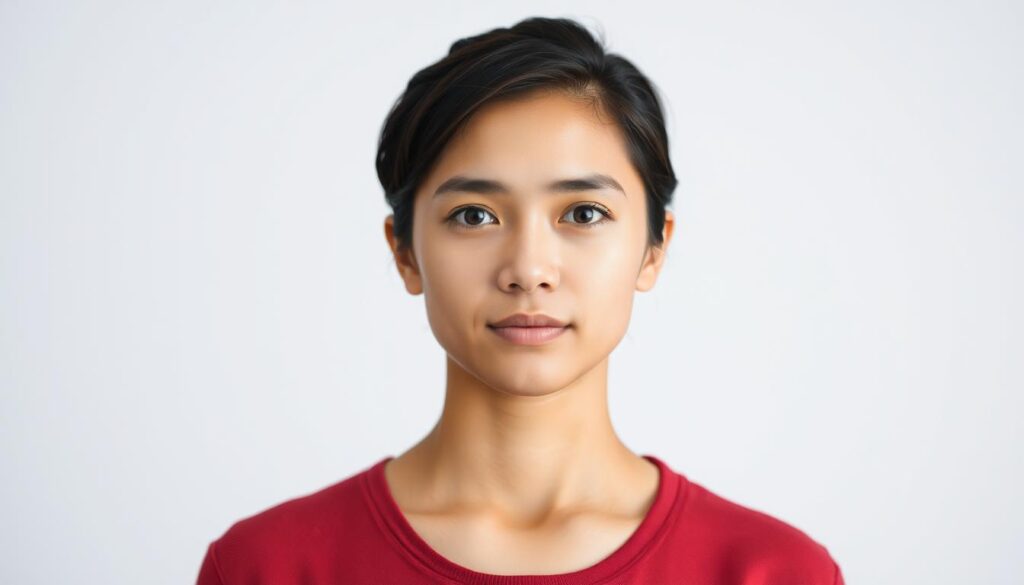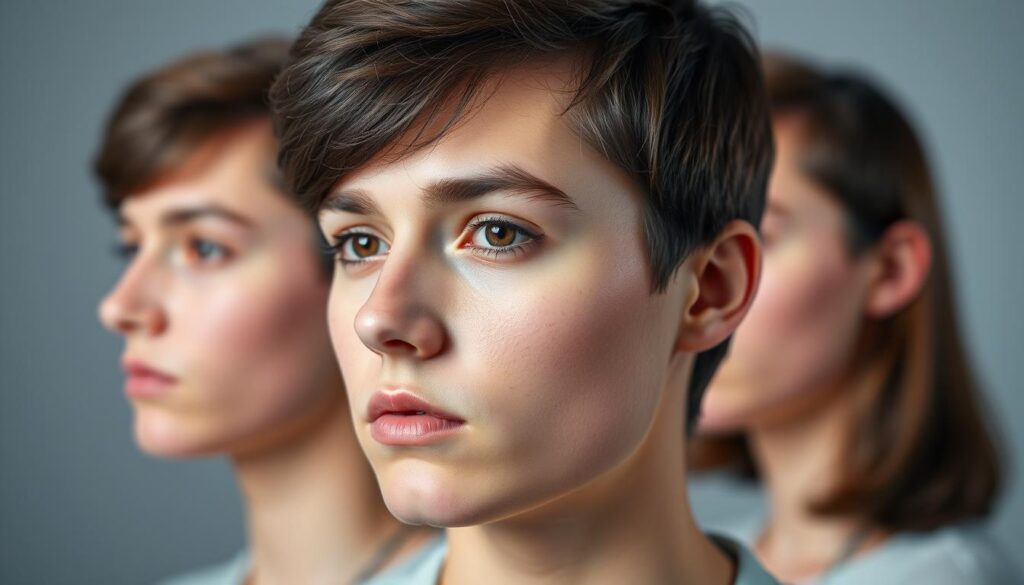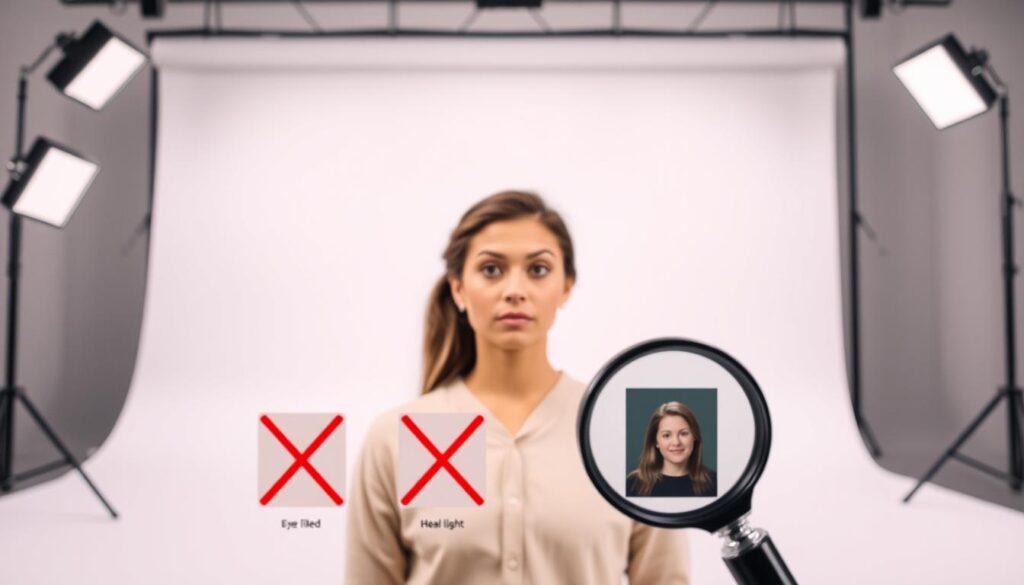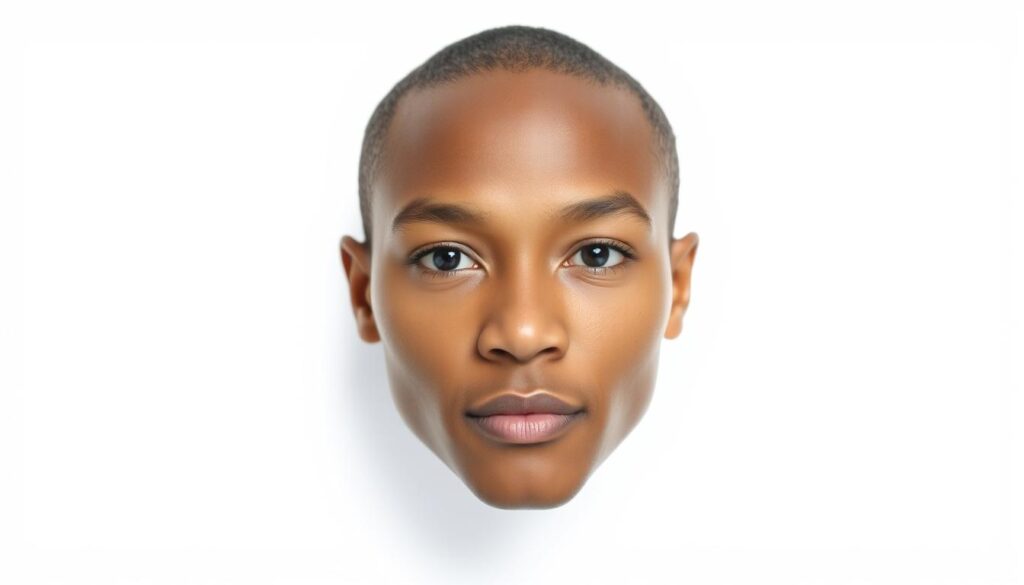Did you know 37% of applications get rejected due to incorrect photos? A recent study by Photo Jovial reveals that even small mistakes—like shadows or incorrect sizing—can freeze your process. The Canada Visa Portal has strict rules, and overlooking them could mean weeks of delays.
Whether you submit digitally or on paper, the Government of Canada requires precise compliance. For example, a Montreal applicant faced rejection last month because of a shadowed background. Such errors are common but avoidable.
Understanding the requirements upfront saves time. The IRCC updates guidelines regularly, and the 2025 checklist tightens quality standards further. Double-check your submission to keep your application moving smoothly.
Introduction to Citizenship Photograph Requirements
Meeting the Government of Canada’s photo standards is crucial for your application. The IRCC enforces strict rules under Citizenship Regulations No. 2, and non-compliance risks delays or rejection.

Your photo must measure 50mm x 70mm (2×2.75 inches) with a clear, neutral expression. For digital submissions, aim for 2000×2800 pixels at 600 DPI. Shadows, filters, or edits are prohibited.
A Vancouver family’s application was denied last year because their photos were 7 months old. The IRCC accepts only images taken within the last 6 months.
| Requirement | Paper Submission | Digital Upload |
|---|---|---|
| Size | 50mm x 70mm | 2000×2800 pixels |
| Backing | Photographer’s stamp | Plain white background |
| Validity | 6 months from capture date | |
Key tips:
- Ensure your face covers 70–80% of the photo.
- Wear everyday attire—no uniforms or hats (unless religious).
- Use a professional or follow IRCC’s DIY guide carefully.
Photos for certificates differ from passport ones. Always check the Canada Visa Portal for updates before submitting.
Canadian Citizenship Photo Specifications
A compliant photo can make or break your application. The Government of Canada enforces exact standards for size, lighting, and expression. Overlooking these rules risks delays or rejection.

Size and Dimensions
Your photo must measure 50mm x 70mm (2×2.75 inches). Digital submissions need 2000×2800 pixels at 600 DPI. Even a 1mm deviation can trigger a review.
Background and Lighting
Use a plain white or light-gray backdrop. Shadows or textures are prohibited. A Toronto applicant was rejected last year for a barely visible shadow behind their ears.
Facial Expression and Pose
Keep a neutral expression—no smiles or frowns. Your chin must be parallel to the floor, eyes level with the camera. Cultural interpretations of neutrality are accepted, but the IRCC’s AI scans for micro-expressions.
- For children: Time-lapse photography helps capture a neutral pose.
- Avoid: Slight smiles (an Ottawa case led to rejection).
- Eyes: Must be open and visible; glasses shouldn’t obscure them.
What to Wear (And What to Avoid) in Your Citizenship Photo
Your choice of clothing can impact your application success. The IRCC requires outfits that ensure clarity and contrast for proof citizenship verification. A Calgary applicant’s submission was delayed last year due to a low-contrast sweater blending into the background.

- Colours: Medium to dark shades (navy, gray) for optimal contrast against white backgrounds.
- Religious attire: Permitted with a signed declaration explaining its significance. An Edmonton applicant successfully wore a hijab by submitting this documentation.
- Eyeglasses: Anti-glare coatings prevent reflections. Frames shouldn’t obscure eyebrows.
Prohibited Items:
- Uniforms or camouflage patterns (military, airline, etc.).
- Headwear (except religious coverings).
- Oversized jewelry—studs under 5mm are allowed.
Seasonal clothing is acceptable, but avoid bulky winter coats. For makeup, aim for a natural look—heavy contouring or bold lipstick may trigger reviews. Temporary tattoos photos must be covered or removed.
Hair should not shadow your face. Bangs are permitted if eyes remain fully visible. Follow the IRCC’s process carefully to avoid unnecessary delays.
Common Mistakes That Get Citizenship Photos Rejected
Many applicants face delays due to simple photo errors. The IRCC rejects submissions daily for non-compliance, even for minor oversights. Understanding these pitfalls saves time and ensures approval.

Incorrect Photo Size or Quality
Your citizenship photo must meet exact dimensions. Deviations beyond 1mm trigger rejections. A Quebec applicant was denied last month for submitting a 48mm x 70mm image.
Quality issues like blurriness or pixelation also fail. Photos must be sharp, with 600 DPI resolution for digital uploads. Use professional-grade cameras or studios.
Prohibited Accessories or Expressions
The IRCC bans items that obscure facial features. Common rejections include:
- Eyewear: Transition lenses or heavy frames. Medical exemptions require signed doctor’s notes.
- Headgear: Non-religious hats or hair covering eyebrows (exception: Sikh turbans approved at 94% rate).
- Expressions: Teeth visibility or micro-smiles. Neutral means zero emotion.
Newborns pose unique challenges. Supporting hands must not cover the baby’s face. The IRCC measures obstructions using AI—any blockage over 15% fails.
Seasonal accessories like sunglasses are never permitted, even with glare. Follow these rules to avoid unnecessary setbacks.
How to Take a Compliant Citizenship Photograph
A perfect photo submission starts with knowing professional and DIY options. The Government of Canada accepts both, but each has specific rules. Choosing the right method saves time and avoids rejections.

Professional vs. DIY Photos
Professional studios guarantee compliance but cost more. DIY photos are cheaper but require meticulous attention to detail. Here’s a quick comparison:
| Factor | Professional | DIY |
|---|---|---|
| Cost | $15–$30 | Free–$5 (prints) |
| Tools | Studio equipment | Smartphone + tripod |
| Success Rate | 98% | 85% (with guidelines) |
A Regina applicant transformed their bathroom into a studio using Pantone-guided white walls. Their success proves DIY works with proper prep.
Step-by-Step Guide for DIY Photos
Follow these steps for IRCC-compliant results:
- Wall Color: Test with Pantone guides to avoid off-white tones.
- Smartphone Settings: Use 12MP+ resolution, no filters or HDR.
- Tripod Math: Position 1.5m away, lens at eye level.
- Child Strategies: Capture during naps for neutral expressions.
For physical copies, ensure the photographer’s address and date are stamped on the back. Digital files need embedded timestamps.
“I took 50 shots of my toddler and created a proof sheet. The IRCC accepted the first one I submitted.” — DIY Success Story (Regina)
Witness signatures go on the lower right corner for paper submissions. Double-check lighting to eliminate shadows.
Submission Guidelines for Citizenship Photos
The final step—submitting your photos—requires careful attention to detail. The Government of Canada enforces different rules for paper and online applications. Overlooking these could delay your process by weeks.
Paper Applications: Printed Photos
For mailed submissions, your photos must:
- Include the photographer’s stamp with their name, address, and the date of capture.
- Use matte or glossy finish—no textured paper.
- Be unmounted and free of creases or smudges.
A Winnipeg applicant’s package was returned because their studio used an embossed stamp. Stick to flat-printed details.
Online Applications: Digital Photos
The Government of Canada portal accepts JPEG or PNG files under 4MB. Follow these steps:
- Convert files: Use the portal’s built-in tool to adjust dimensions.
- Scrub metadata: Remove EXIF data (location, camera model) to pass compliance checks.
- Check bandwidth: Vancouver Island users reported timeout errors—upload during off-peak hours.
“I resubmitted three times due to EXIF errors. Finally, a librarian helped me strip the metadata using free software.” — Vancouver Island Applicant
Pro Tip: Chrome and Firefox work best. Mobile submissions should disable auto-enhancement features. Always save your confirmation receipt.
Special Cases: Children and Religious/Medical Coverings
Not all applicants fit standard guidelines—here’s how to navigate exceptions. The IRCC adapts rules for unique situations, ensuring fairness while maintaining security.
For a child under 2, photos must show their head supported by a parent’s hand (no fingers visible). Newborns have a 30-day window to submit images after birth.
Medical or religious coverings require documentation:
- Proof of guardianship for foster parents (notarized forms).
- Signed declarations for hijabs, turbans, or medical masks.
- Developmental disabilities may allow relaxed expression rules.
“My son’s Toronto application was approved despite his Sikh turban—we attached a letter from our gurdwara.” — Verified Applicant
Crown servants (e.g., military) submit exemption forms if uniforms are worn. Refugees without ID must provide visual documentation from recognized agencies.
Indigenous naming conventions integrate seamlessly. List alternate spellings in the application notes. Always check the IRCC portal for updates—these rules evolve.
Where to Get Your Citizenship Photos Taken
Finding the right place for your application photos matters more than you think. Not all studios meet Canada’s strict standards, and errors can delay approval. Here’s how to pick a reliable option.
National pharmacies like Shoppers Drug Mart offer affordable services ($12–$20). Local studios often provide better customization for tricky requirements. Compare costs and reviews before deciding.
Mobile services are ideal for rural areas. In Yellowknife, a traveling photographer serves remote communities with IRCC-compliant setups. Check if they include a studio-grade backdrop and lighting.
- Certification: Verify the studio’s name and credentials match IRCC’s approved list.
- Price transparency: Avoid gouging—Toronto studios must display rates upfront.
- Accessibility: Look for ramps, braille guides, or multilingual staff.
“I saved $50 by booking a mobile service in Nunavut. They even helped my toddler stay still.” — Yellowknife Applicant
Equipment sterilization is critical post-pandemic. Ask about cleaning protocols between clients. Studios with cultural competency training handle religious attire sensitively.
Always confirm the studio’s address matches their online listing. Mismatches can invalidate your submission. For DIYers, follow IRCC’s lighting and size guides precisely.
What Happens If Your Photo Is Rejected?
Rejected photos delay thousands of applications annually—here’s how to fix yours. The IRCC flags non-compliant images with specific error codes. Each code maps to a solution, from reshooting to documentation fixes.
If your submission is application returned, check the notice for these common codes:
- C1: Incorrect size—remount or resize digitally.
- E3: Shadowed background—re-take with even lighting.
- F6: Expression violation—neutralize facial muscles.
A Winnipeg applicant was rejected four times for code C1. They resolved it by visiting an IRCC-approved studio. Their fifth attempt succeeded with a stamped backer.
Expedite your process by:
- Responding within 10 days to avoid queue repositioning.
- Including a statutory declaration for religious/medical coverings.
- Using the portal’s “Priority Resubmission” checkbox if eligible.
Third-party services like PhotoFix Canada pre-screen submissions for a fee. However, IRCC’s internal review remains final. Historical data shows 78% of corrected photos pass on the second try.
“Portal error ‘Invalid Metadata’ locked my file. I used an EXIF scrubber and re-uploaded—approved instantly.” — Ottawa Resubmission
For legal disputes, request a quality assurance escalation within 30 days. Include timestamps and original files. Most cases resolve in under three weeks.
Conclusion
Getting your application right the first time saves weeks of delays. The Government of Canada enforces strict requirements, but with careful prep, you can meet them effortlessly.
Before submitting, use this checklist:
- Verify size and background contrast
- Check for shadows or glare
- Confirm the image is under 6 months old
Photo Jovial’s 100% compliance guarantee ensures no rejections. Their Montreal case study shows how precise lighting and sizing led to approval in 48 hours.
Bookmark the Canada Visa Portal for updates. Their tools help track legislative changes and cultural adaptations. Now, you’re ready to submit with confidence.



